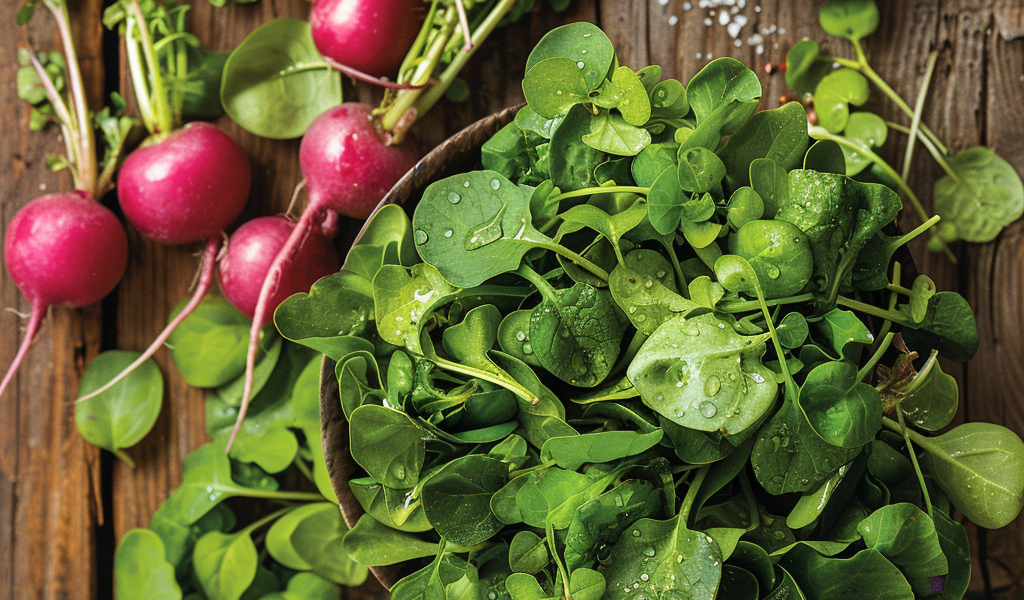The Centers for Disease Control and Prevention (CDC) has recently released findings that may change the way we view our vegetable choices. In a comprehensive study evaluating the nutritional density of various fruits and vegetables, the CDC identified the top contenders that pack the most nutritional punch per calorie. This analysis focused on 47 different fruits and vegetables, measuring their nutrient density against their caloric content.
Understanding Nutrient Density
Nutrient density is a crucial concept in nutrition, referring to the amount of essential nutrients a food contains relative to its caloric value. The CDC’s study examined 17 key nutrients, including protein, fiber, potassium, calcium, iron, and essential vitamins such as A, B6, C, E, and K, all measured per 100 grams of the food. The goal was to determine which foods provide the most nutrients for the least amount of calories, making them ideal choices for a healthy diet.
The Top Vegetables Revealed
Interestingly, the top four vegetables identified in the study hail from two powerful botanical families: Brassicaceae and Amaranthaceae. The Brassicaceae family, often referred to as cruciferous vegetables, includes well-known varieties like broccoli and cauliflower. However, these favorites did not make it to the top of the list.
The standout winner in the CDC’s analysis was none other than watercress. This leafy green, characterized by its small, round leaves, is commonly found in British tea sandwiches but is often overlooked in everyday diets. Watercress achieved a perfect score of 100 out of 100, meaning it supplies 100% of the daily value of the measured nutrients per 100 calories. In stark contrast, iceberg lettuce, which is frequently used as a garnish or filler, scored a mere 18.28, highlighting its lack of nutritional value.
The Importance of Eating Greens
We’ve all heard the advice to “eat your greens,” but in our fast-paced lives, it can be easy to neglect this essential dietary component. Many pre-prepared meals, such as sandwiches and frozen dinners, tend to be high in carbohydrates and low in greens, making it challenging to incorporate nutrient-rich vegetables into our diets. The simple slice of iceberg lettuce on a burger or sandwich does little to contribute to our nutritional needs.
Growing Watercress at Home
For those looking to boost their intake of this powerhouse vegetable, growing watercress at home is a viable option. This perennial plant is native to Asia, Europe, and Northern Africa and thrives in USDA zones 3a-11b. Watercress prefers consistently moist soil and is best suited for locations such as pond edges with dappled shade. To promote growth, using a higher-nitrogen fertilizer can help produce new leaves continuously.
In regions with milder climates, such as Seattle, watercress can potentially be harvested year-round, provided it is protected from freezing temperatures. While watercress is not classified as a noxious weed, it has been on the Monitor List of Washington’s Noxious Weed Board since 2012, indicating its robust growth habits.
Incorporating Watercress into Your Diet
Incorporating watercress into your meals can be both easy and delicious. This versatile green can be used in salads, soups, and sandwiches, or even blended into smoothies for an added nutritional boost. Its peppery flavor adds a unique twist to dishes, making it a delightful addition to any meal.
As the CDC’s findings highlight the importance of nutrient-dense foods, it’s essential to consider how we can enhance our diets with vegetables that offer significant health benefits. By prioritizing greens like watercress, individuals can take a step toward healthier eating habits and improved overall well-being.
As you plan your meals, remember the importance of including a variety of vegetables, particularly those that are nutrient-rich. With a little effort and creativity, you can transform your diet and make significant strides toward a healthier lifestyle.





